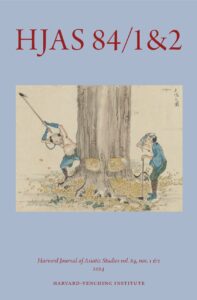
Akinobu Kuroda
in HJAS (Harvard Journal of Asiatic Studies), 84/1&2
Abstract: Between the late twelfth and mid-fourteenth centuries, copper coins, undervalued and demonetized by Chinese dynasties, travelled to Japan for use as bronze material rather than money. The development of copper mining in Japan in the fifteenth century caused dealers to stratify coins, using standard coin for large, distant transactions and operational coin for local ones. When the import of standard coin from China was suspended, rice was revived as the monetary unit for transactions in 1570s’ Japan. Local dealers changed consensus over what medium was to be used for transactions and what exchange rate was applied to standard coin. As late as the 1620s, brass copper coins newly issued by the Ming swept bronze copper coins bearing old era names from China. Responding to this trend on the continent, state-issued copper coins, such as the Kan’ei coin in Japan, swept away the actual free coinage system from East Asia.
摘要 (日本語): 中世日本列島に流通した通貨は中国古銭であった。当初は鐘や仏像を鋳造する素材需要を満たすため廃銭政策をとる中国から輸入された。硫化銅精錬による銅価格下落は古銭と模造古銭の差別化慣行をシナ海一帯にもたらしたが、寛永通宝鋳造は列島内通貨流通を独立させた。
About the author: Akinobu Kuroda was a Visiting Scholar from 2014-15.
